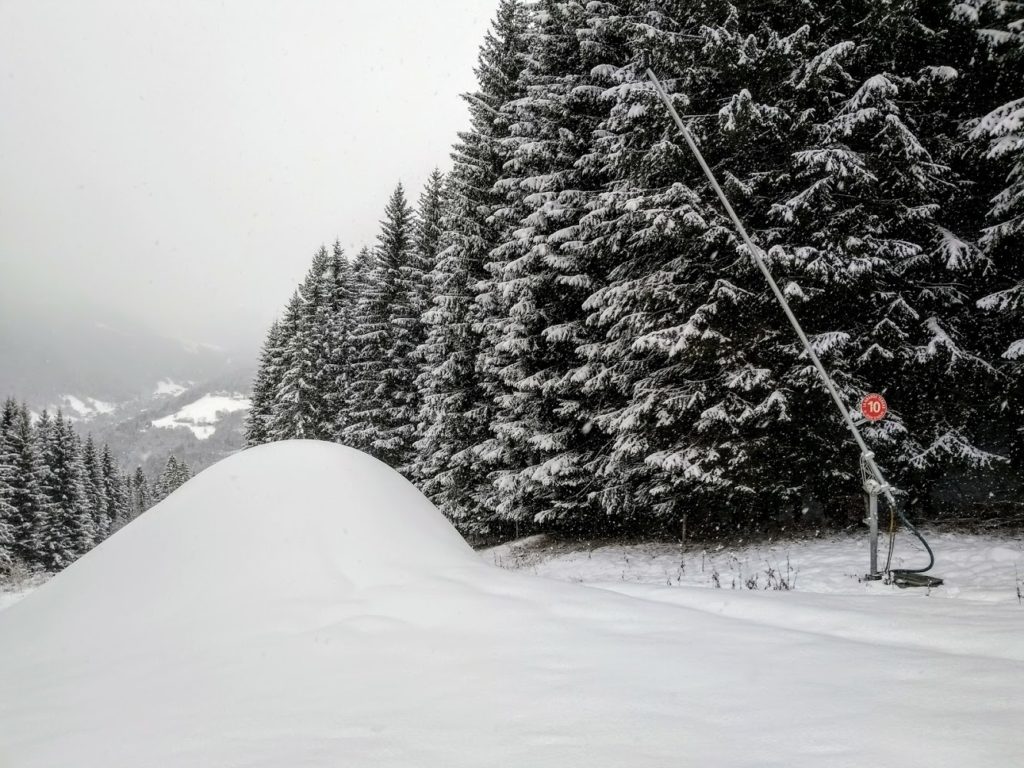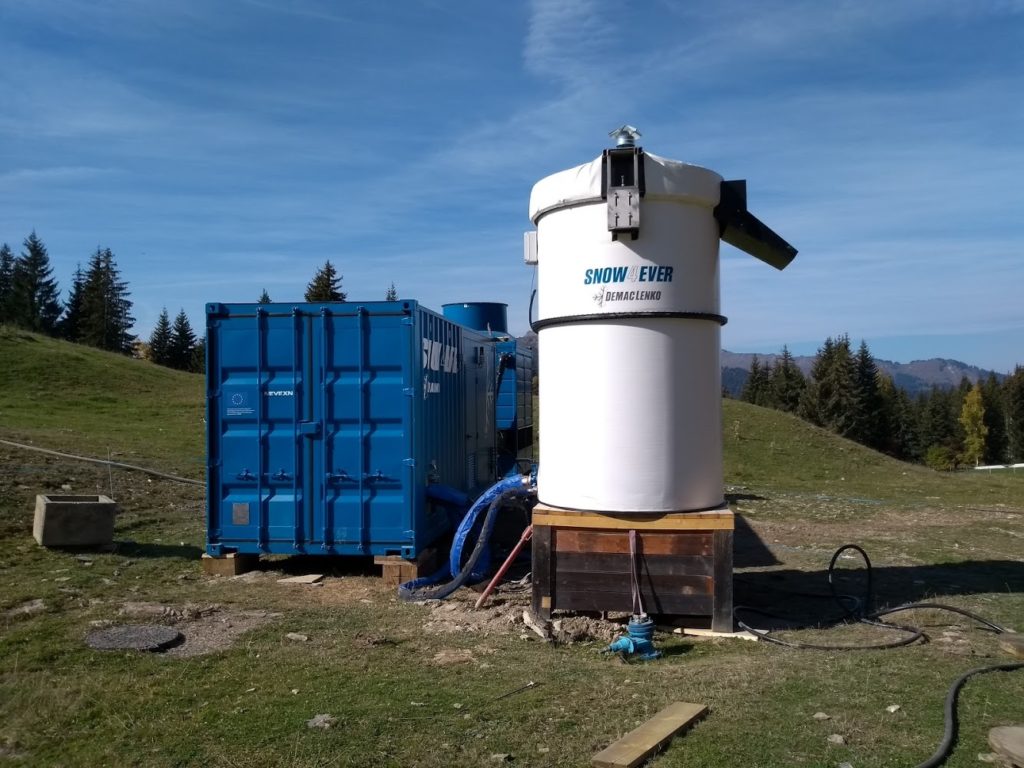Snow Farming in ski resorts is a catch-all term that refers to all the various methods of putting snow on a piste that would not arrive there naturally. It has piqued my interest because local to me Chatel and Les Gets have recently installed a “Snow Factory”. I have wondered how environmentally friendly it is! The obvious answer is that it is not great for the environment, however the fact that they have become so popular must mean they are cheaper and thus more eco than other methods available.
I’m no expert on the environmental impacts of creating snow, however I have tried to quantify it a bit
Pistes are created by natural snowfall.
Obviously this has to have the least environmental impact. There is not much to say here, apart from the fact they need to groom the piste with a piste basher (Snow groomer in the US and Dameuse in French)
Snow is scraped up from areas around the piste.
The is “snow farming” in it’s most basic form. The environmental impact comes from running a piste machine. Some ski areas are preparing these areas to be farmed (so removing trees, or clearing shrubs). There is also some shaping that can be done to the piste to help, shading too.
Wind fences
Wind blown snow is collected by snow fences, either permanent or temporary. You’ll have seen these on various parts of the mountain, especially in Scotland. These have a fairly low environmental impact, however the snow that has not collected on the piste will need moving with a piste basher. There is an article on this here https://gotowv.com/snow-farming/
Snow storage
It might seem like a mad idea but this is one of the cheapest (read eco-friendly) and oldest methods in use. It’s also frequently used. Many of our local ski areas use it, especially the cross country ski areas, possibly because they find it easier to pile up a large stock and keep it somewhere shaded. And that is the trick, make a huge pile of snow, ideally somewhere shaded, cover it in 30 cm of wood chip and there should be 70 or 80% of it left come the following Autumn. Mikko Martikainen http://www.snowsecure.fi/ has made his living doing this of the last decade. He’s been busy too, Sochi was a full time job and last year Pyongyang used his skills too.
The image below shows the results in the Haute Savoie. A round of the World Cup Biathlon was scheduled for early December, you can see there is no sign of snow in the background and the racer is wearing a T-shirt!
Permanent snow making equipment.
We are all used to these. The cheapest form is a lance, that mixes pre-cooled water with compressed air to form a mist, this is ejected from the lance 6-12m from the ground to give the water droplets time to freeze before they hit the floor. The air has to be below freezing (-1C or less) and the humidity of the ambient air is important, practically the air temperature needs to be <3C. The environmental conditions are crucial. Which is why when they are right, a resort will make snow whether they need it that day or not. Because it will be used to build a base that will extend the season possibly weeks away. In addition to the wands are “fan guns”, that look a bit like the turbines off an aeroplane. They can produced twice as much snow as a lance, but at twice the running cost.
Snow Factories.
These are simply refrigerated units, snow is created inside and then pumped out into the surrounding environment. The manufacturers claim that snow can be made at almost any temperature. It’s a bit of a fib, but hey, that’s the marketing. They are now being installed everywhere, pretty soon you will see them at every resort. However they are almost the most expensive way of making snow, so they’ll only be installed at the crucial spots.
Transporting snow by truck and helicopter.
I assume this has to be the last on the list. I’ve seen a local resort use the truck option to ensure they could hold a crucial event. It was late season and they had scheduled the race at the end of one of the local valleys. There was insufficient snow cover so they had to truck in 100 truck loads from somewhere else. That’s not all, ski areas will go to even more extreme steps, using helicopters to carry snow to crucial areas to keep things going. They justify it as it keeps the business going. However the irony is no longer a joke.





